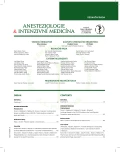The role of simulation in the evolution of anaesthesia and intensive care medicine
Authors:
M. Stern
Authors‘ workplace:
Klinika anesteziologie a resuscitace 3. LF UK a FNKV, Praha
Published in:
Anest. intenziv. Med., 27, 2016, č. 3, s. 187-190
Category:
Overview
How can clinicians master the treatment of complicated medical conditions without exposing patients to risk? How can we assess the ability of physicians and teams when each patient and doctor is different, when there are many conditions and yet more combinations? These and similar issues have led to the development of medical simulation. The inspiration for the creation of this part of medicine has come from the airline, military and aerospace industry. The aim of simulation is the development of non-technical skills (e.g. communication) of individuals and the team. A unique opportunity for self-reflection (the simulator does not die) is an opportunity to improve the skills of each of us.
Keywords:
medical simulation – CRM – debriefing
Sources
1. Reason, J. Human error: models and management. Western J. Med., 2000, 172, p. 393–396.
2. Linda, T., Kohn, J., Corrigan, M. and Committee on Quality of Health Care in America. To Err Is Human: Building a Safer Health System, 1999.
3. Dieckmann, P. Simulation is more than technology – The simulation setting. 2009.
4. Gaba, D. M. Human error in anesthetic mishaps. Int. Anesthesiol. Clin., 1989, 27, p. 137–147.
5. Gaba, D. M., Howard, S. K., Fish, K. J. Simulation-based training in anesthesia crisis resource management (ACRM): a decade of experience. Simulat Gaming, 2001, 32, p. 175–193.
Labels
Anaesthesiology, Resuscitation and Inten Intensive Care MedicineArticle was published in
Anaesthesiology and Intensive Care Medicine

2016 Issue 3
Most read in this issue
- Pleural effusion in intensive care
- Tracheal damage as a consequence of percutaneous dilatation tracheostomy – case reports and review of literature
- Echocardiographic examination in mitral valve disease
- The role of simulation in the evolution of anaesthesia and intensive care medicine
